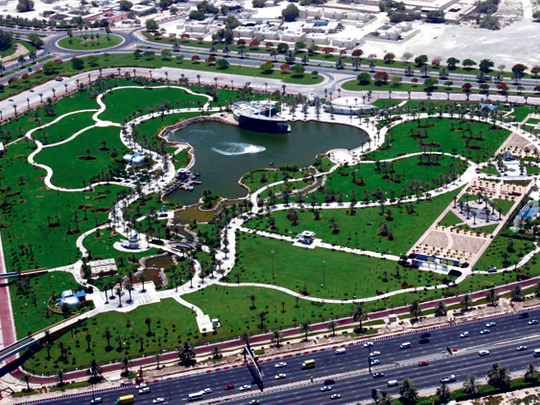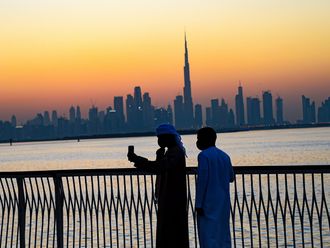
While landscaping the desert creates beautiful public spaces, it also means a strain on precious water resources. However, sensible planting and water retention strategies combined with the usage of grey water for irrigation help maintain the vision of greening the desert in the UAE.
The Estidama (which translates to mean sustainability) ratings in Abu Dhabi are making their mark by ensuring that public spaces are treated as an important aspect of projects, while the Parks and Recreation Facilities Division (PRFD), which is part of the Abu Dhabi Municipality (ADM) is entrusted with implementing that vision. Meanwhile, Dubai Municipality is aiming for zero energy parks, according to a senior official.
Landscape strategy
"We have joined our efforts with strategic partners such as the Abu Dhabi Urban Planning Council (UPC) to coordinate on the development of projects that are aligned with the guidelines of the Public Design Realm Manual and Estidama. Other associated partners include the Department of Transportation, Department of Municipal Affairs, and the Environment Agency," says Rashed Abdullah Al Falasi, Director, PRFD.
Al Falasi says the PRFD has set up an overall landscape strategy, which spans the year from 2010 to 2015. It’s mission is to foster a distinctive, vibrant, aesthetically pleasing network of open spaces and public areas across the city that offers residents and visitors landscaped areas while ensuring the sustainable use of natural resources. "One of the most important aspects is reducing the usage of irrigation water, dependence on natural groundwater resources while using local tolerant plants and a plantation system, attempting to use sea water and extensively recycling the irrigation water," he says.
The ADM was recently awarded the Greenery Award for Best City in the Middle East Countries for 2010, presented by the Arab Cities Organisation at an event in Doha. At the same time, since PRFD is dealing with recreation facilities, its members worked closely together resulting in Abu Dhabi Corniche becoming the first beach in the Arabian Gulf region to achieve Blue Flag certification for beaches and marinas in June 2011. Blue Flag is awarded to beaches which meet 32 strict criteria, including environmental management, information and education, water quality, public safety and services.
Focus on green spaces
Similarly, Dubai created its own green and sustainable guidelines by taking into account that it is located in a hot arid zone. "We did take a look at Singapore as a case study in landscaping. But then we evolved our own guidelines with respect to our climate and lack of water. Again, we also looked at how to make people interact with the green spaces and not just the beautification aspect," says Fatima Essa Al Muhairi, Head of Landscaping section at the Dubai Municipality’s (DM) General Projects Department.
Traditionally, parks in Dubai were blocked with a concrete fence, a green buffer zone and closed off for public interaction till one enters the precincts. "In 2005, I joined the landscape division of DM as an architect. Our strategy was to slowly open up the parks with cast aluminium barricades that would visually engage the interiors with people outside the park," she says.
A focus on health activities is expected to follow, with the launch of jogging tracks, rubberised flooring for sport courts and so on. "Till 2009, we followed that trend. Now we are looking at creating open parks and applying sustainable energy principles. In areas such as Barsha, Abu Hail, Al Sufouh and others, we have constructed projects that are illuminated by solar light poles. Now our plan is to go for green parks, which will stop relying on electricity," says Fatima. Over the next five years, the DM will track this experiment innew parks.
So what are the plans in the coming years? "Dubai is now a mature city in terms of landscaping. Over the next two years, we plan to concentrate on the countryside, i.e. areas such as Al Awir, Hatta, and Lehbab, that have a lack of parks and facilities. Then, streetscapes are being designed by the Road Transport Authority and we follow with maintenance. Recently, we have started getting streetscape projects such as the running area under the Dubai Metro on Shaikh Zayed Road and some other private clients," says Fatima.
"We are also studying and experimenting with water retention strategies, which will be implemented once they show success rates. But our biggest ambition is to consider zero energy parks as our mission in the long run," she concludes.
And why not? According to her, the DM gets calls from Abu Dhabi, Bahrain and Oman to share its landscaping success strategies when it comes to the current high-grade parks in Dubai. Go green UAE!













